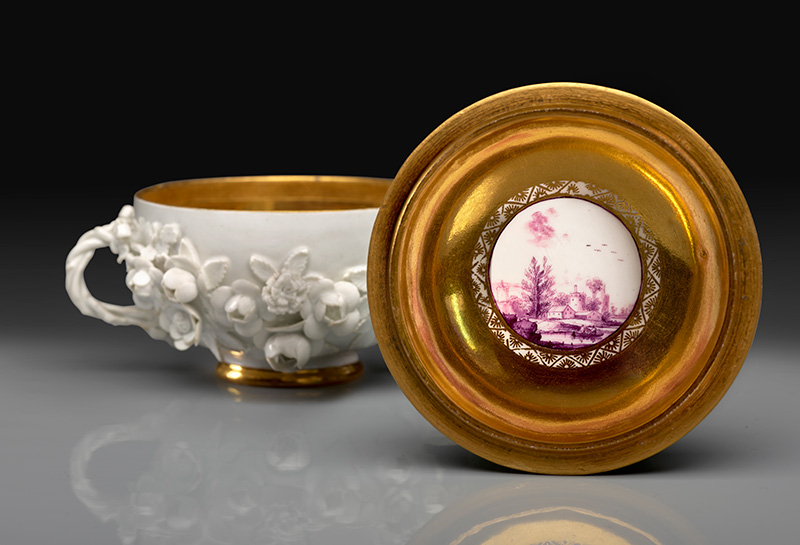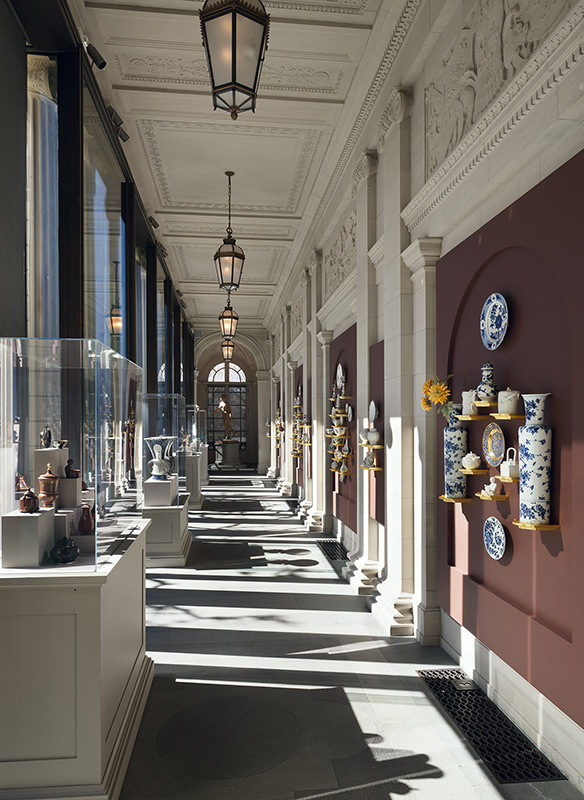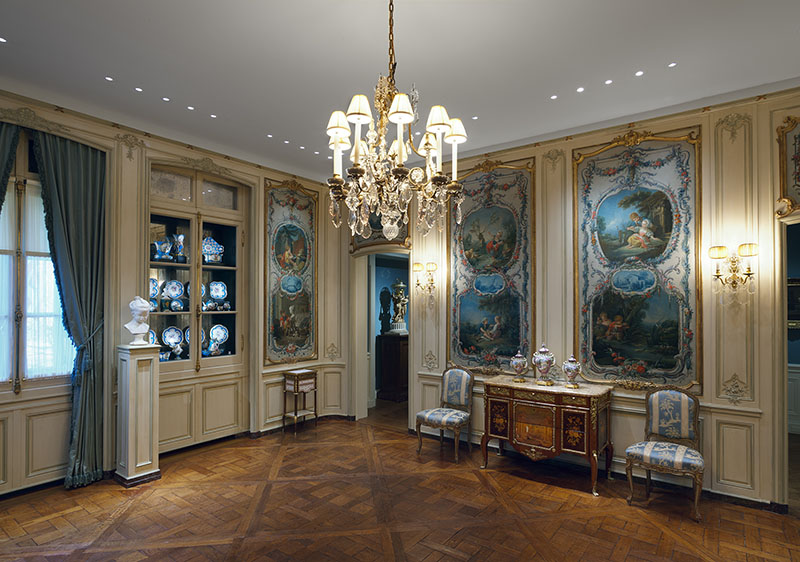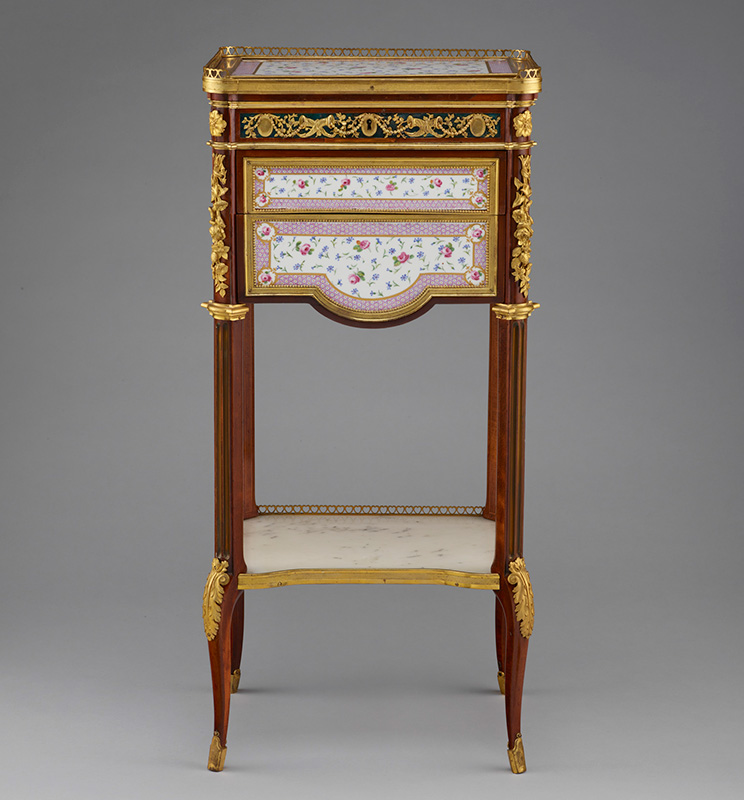Decorative Arts Shine at the Reopened Frick
Click on images to enlarge them and view captions.
by Marie-Laure Buku Pongo
The Frick Collection recently reopened its doors following a significant renovation, marking a true milestone in the institution’s 90-year history. This project not only restored familiar spaces on the first floor of our historic home on New York City’s Upper East Side but also unveiled the second floor to the public for the first time. This expansion increases our display space by 25%, allowing the curatorial team to showcase a broader array of decorative arts, including furniture, ceramics, clocks and watches, and enamels. The Frick’s holdings are exceptionally strong across many of these areas, spanning a wide range of periods and regions.
The second floor was once the private quarters of American industrialist and collector Henry Clay Frick (1849–1919), his wife Adelaide (1859–1931), and their daughter Helen (1888–1984) and now houses ten new galleries. These spaces provide a more intimate setting for visitors to engage with decorative arts, complementing the numerous works displayed in the grander-scale rooms on the first floor. Transforming former private rooms into public galleries has allowed us to bring many objects out of storage and share them with visitors, offering fresh perspectives on the collection.
As the Associate Curator of Decorative Arts, I had significant flexibility in deciding where and how these objects would be displayed during the re-installation of the collection in consultation with my curatorial colleagues. Many of the newly displayed items are recent acquisitions, such as the extraordinary gift of Meissen porcelain bequeathed by Henry H. Arnhold (figure 1), now featured in the Portico Gallery (figure 2), where the new display allows visitors to view the works closely, unobstructed by vitrines.
Recent acquisitions are often displayed as cohesive groups, reflecting the way they entered the collection. For instance, we now present a selection of French faience bequeathed by Sidney R. Knafel, as well as remarkable examples of Viennese Du Paquier porcelain donated by Melinda and Paul Sullivan.
The installation also considers centers of production, time period, color, and aesthetic appeal. Historical and artistic context is also crucial. When installing the Enamels Room on the first floor, the French origin of most of these works inspired my decision to display pieces by Léonard Limosin depicting the Guise family, founders of the Catholic Ligue in France, the Triumph of the Eucharist, and the portrait of Odet de Coligny, Cardinal of Châtillon. Coligny was excommunicated after converting to Protestantism and likely poisoned in England in 1571. His brother, Gaspard de Coligny, Admiral of France and the leading Huguenot political figure of the time, was assassinated at the start of the St. Bartholomew’s Day massacre in 1572.
A similar approach guided my choices in the Portico Gallery, where Meissen porcelains from the Arnhold gift are displayed alongside their Chinese inspiration, for example, a c. 1700 Kangxi-period teapot paired with its Meissen reinterpretation. In the Boucher Anteroom, I added blue and white Chinese porcelain as a nod to François Boucher’s Lady on a Day Bed. Boucher was a great collector of Chinese and Japanese porcelains, and several are visible in the painting.
The restored Boucher Room (figure 3) returned to the second floor as part of the renovation and features several decorative arts highlights, including a marvelous 18th-century mechanical table by cabinetmaker Martin Carlin (figure 4), a garniture of pots-pourris feuilles de mirte (or à feuillages) produced after a model by Jean-Claude Duplessis, and an elegant display of Vincennes and Sèvres porcelain.
Also not to be missed is the newly dedicated Clocks and Watches Room, located in the former butler’s pantry. This gallery showcases a selection from a remarkable bequest of approximately forty timepieces from Winthrop Kellogg Edey. These intricate objects, once overshadowed by paintings and sculptures on the first floor, now have a space where their craftsmanship can be better appreciated.
Throughout the museum, we also introduced object labels for decorative arts—a first for the Frick—and recorded audio descriptions for our mobile guide. As we welcome visitors back, I invite you to explore these new galleries and experience the rich tapestry of decorative arts that the Frick has to offer. Whether you are discovering these works for the first time or seeing them in a new light, I hope they inspire and delight you as much as they do me.
Marie-Laure Buku Pongo is the Associate Curator of Decorative Arts at The Frick Collection.
A print version of this article was published in The Magazine of the Decorative Arts Trust, one of our most popular member benefits. Join today!




